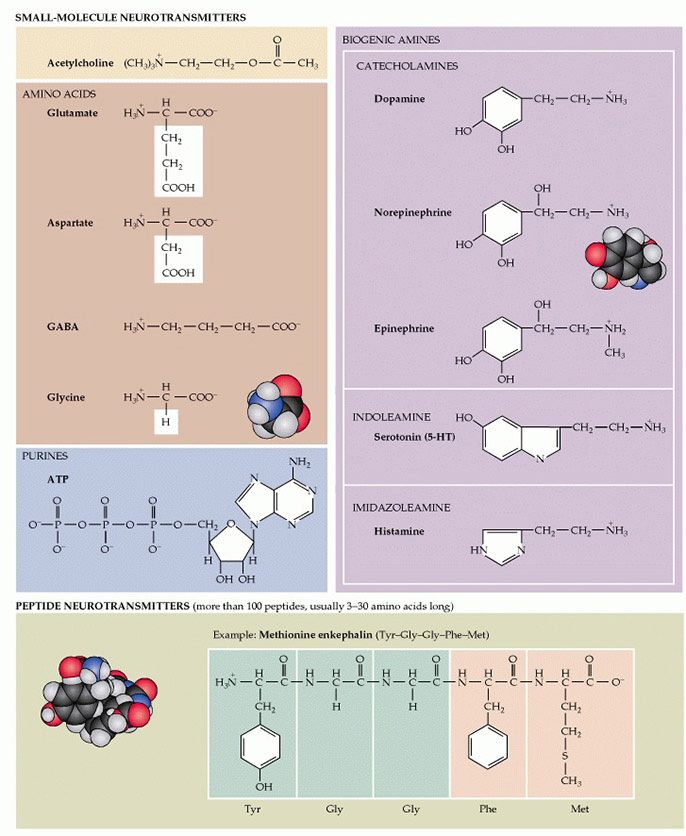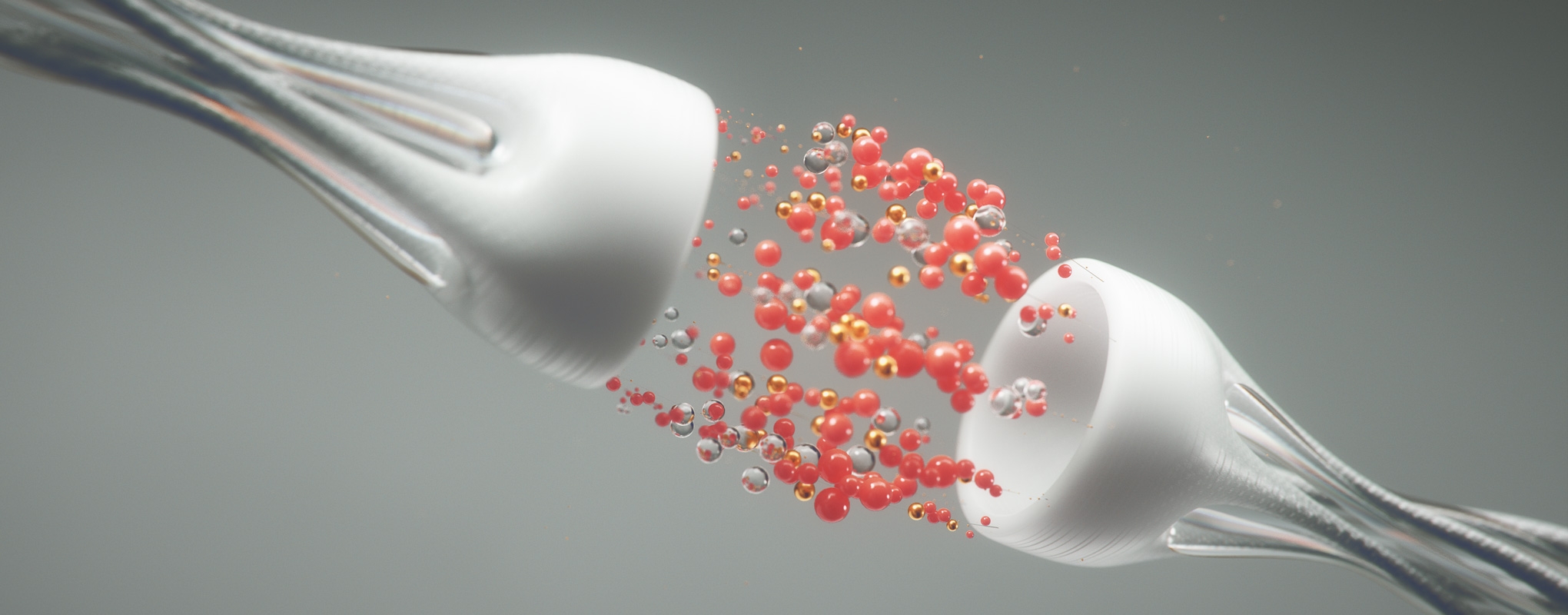Understanding the Brain From a Neurotransmitter Perspective
Neurotransmitters. To put simply, this is just a fancy name for brain chemicals. But how do they affect you on a daily basis? What strategies and nootropics can be deployed to manipulate them?
First things first… neurotransmitters are not so straight-forward. However, there appears to be solid scientific research and understanding around the effect that particular neurotransmitters exert when released in specific brain regions. With this understanding in mind, nootropic users can gain insight as to what a particular nootropic might do for them. It is well established that these neurotransmitters are highly influential on our mood, motivation, anxiety and overall mental health.¹
But one must realise, that these cannot be accurately measured as of yet since the technology is still being developed. Most neurotransmitter tests are analysing the metabolites of particular neurotransmitters, however, it offers no insight as to what quantities they are being released at, which region of the brain they are active in and also receptor density concentrations.
In this article, an analysis of the key neurotransmitters and their functions will be presented. In addition, an exploration as to the implications of neurotransmitter imbalances and disturbances will also be detailed.
Finally, a comprehensive review of various nootropics will be explored for users to utilise on their journey to maximal human performance.
The Different Neurotransmitter Systems
The chemical messengers that act as conventional neurotransmitters share certain basic features. They are stored in synaptic vesicles, get released when calcium enters the axon terminal in response to an action potential, and act by binding to receptors on the membrane of the postsynaptic cell.²
However, it is important to make a distinction between the two groups of neurotransmitter systems.
For purposes of discussion, it is useful to separate this variety of agents into two broad categories based simply on their size.
Neuropeptides are relatively large neurotransmitter molecules composed of 3 to 36 amino acids. Note that one peptide can include the sequence of other neuroactive peptides. For example, ?-endorphin contains both ?-endorphin and methionine enkephalin.³ Some of these neuropeptides include the endorphins and enkephalins, which inhibit pain; Substance P, which carries pain signals; and Neuropeptide Y, which stimulates eating and may act to prevent seizures.³
Individual amino acids, such as glutamate and GABA, as well as the neurotransmitters acetylcholine, serotonin, and histamine, are much smaller than neuropeptides and are therefore known as small-molecule neurotransmitters. Within the category of small-molecule neurotransmitters, the biogenic amines (dopamine, norepinephrine, epinephrine, serotonin, and histamine) are often discussed separately because of their similar chemical properties and postsynaptic actions.³
The biogenic amines dopamine, norepinephrine, epinephrine, serotonin, and histamine, which are made from amino acid precursors. For example, you may remember the amino acids in our food, L-Tryptophan and L-Tyrosine? These are essentially the building blocks for the neurotransmitters serotonin and dopamine.?
Purinergic neurotransmitters ATP and adenosine, are nucleotides and nucleosides, and these serve to act as neuromodulators, thereby influencing the activity and function of a myriad of other neurotransmitter systems.? For example, adenosine, which is acted on via nootropics such as TeaCrine/Theacrine serve to integrate excitatory and inhibitory neurotransmission.?

[Figure 6.3. Examples of small-molecule and peptide neurotransmitters. Source]
Broad Functions of Each Small Molecule Neurotransmitter
Acetylcholine
Acetylcholine was the first neurotransmitter scientists discovered. Acetylcholine is one of the most abundant neurotransmitters in the human body, often abbreviated ACh. It is in found in both the central nervous system (CNS) and the peripheral nervous system (PNS). The most influential effect that acetylcholine has on the brain is in regards to learning, memory, and attention.?
Acetylcholine performs as a transmitter at all neuromuscular (nerve-to-skeletal muscle) connections, thereby helping with muscle contractions. In fact, there is research to suggest acetylcholine donors, such as Alpha GPC support muscle workout performance.? It stimulates muscle contractions and, thus, all behavior.
Acetylcholine is the transmitter of parasympathetic half of the autonomic nervous system, thereby influencing parasympathetic activity… Think rest, digest and reproduce.?
Dopamine
Dopamine is a very unique neurotransmitter. It governs the way a person behaves. It plays an important role in movement, food preference, learning, attention, habits, mood, and more.? But most people associate dopamine with our most decadent urges – essentially sex, drugs, and rock n roll – than its less titillating mechanisms. Dopamine’s popular definition differs depending on the context, but scientifically speaking, it is a naturally occurring brain chemical that can stimulate pleasure, euphoria, motivation, attention, and movement.?
There are many nootropics that appear to work on the dopaminergic system. The most commonly used ones are L-Theanine, NALT, Rhodiola and Yerba Mate tea.
GABA
Gamma-aminobutyric acid (GABA) is the primary inhibitory neurotransmitter known to counterbalance the action of the excitatory neurotransmitter glutamate.?
A primary function of GABA is to reduce anxiety-like behaviour. During pain, fear or stress, certain groups of neurons can become hyperactive, firing too frequently. GABA steps in to wipe away the tears and fears, soothing neurons to a lower state of stimulation and promoting a feeling of calm and relaxation.¹?
GABA (gamma-aminobutyric acid) is a common neurotransmitter that affects many aspects of health, especially emotional and physical stability. Like a parent turning off a light switch at nap time, it regulates and restricts neuroelectric activity. Without GABA, electrical activity is on, resulting in seizures. There are a plethora of nootropics that target this system, which include Picamilon, L-Theanine, and Magnesium N-acetyltaurinate (ATA Mg®).
Glutamate
Glutamate is a powerful excitatory neurotransmitter that is released by nerve cells in the brain. It is responsible for sending signals between nerve cells, and under normal conditions, it plays an important role in learning and memory.¹¹
Generally speaking, many people lack a deficiency in this neurotransmitter, and most people usually respond best to nootropics that quiet/dampen the activity of this neurotransmitter like L-Theanine and Magnesium N-acetyltaurinate (ATA Mg®).
Glutamate is a sweet balancing act. Too little glutamate excitation can result in difficulty concentrating or mental exhaustion. But too much can result in excitotoxicity, which can damage nerve cells (neurons).¹¹
Histamine
Generally speaking, most people associate histamine with food intolerances and allergies. This is true, however, in the brain, it possesses potent effects. For example, Histamine, which is formed from the essential amino acid L-Histidine, appears to impact wakefulness, alertness, and arousal.¹²
Not many nootropics are known to increase the activity of this neurotransmitter, however, Modafinil and L-Histidine may do this. Thus, histamine is an important regulator of sleep-wake cycles and probably contributes to the diurnal changes in other brain functions as well. Pharmacological studies suggest that centrally administered histamine can also enhance learning and retention of tasks in laboratory animals.¹³
Norepinephrine
Norepinephrine is a neurotransmitter that is important for attentiveness, emotions, sleeping, dreaming, and learning.
Norepinephrine is also released as a hormone into the blood, where it causes blood vessels to contract and heart rate to increase.
Norepinephrine activity and release results in a dramatic increase in cellular BDNF expression mediated by the activation of ?1/?2-adrenergic receptors as well as ?1-adrenergic receptors.¹?
It also strongly affects the longer-term processes of plasticity via long-term potentiation (LTP) and long-term depression (LTD). Within the hippocampus, norepinephrine has been shown to facilitate LTP through activation of ?-adrenergic receptors.¹?
Nootropics such as NALT, Rhodiola and Caffeine are all known to increase norepinephrine levels.
Opioids
The opioid system controls pain, reward, and addictive behaviors. Opioid drugs, typified by morphine, produce their pharmacological actions, including analgesia, by acting on receptors located on neuronal cell membranes. The presynaptic action of opioids to inhibit neurotransmitter release is considered to be their major effect in the nervous system.¹? Opioid receptors in the brain are activated by a family of endogenous peptides like enkephalins, dynorphins, and endorphin, which are released by neurons. Opioid receptors can also be activated exogenously by alkaloid opiates.
The opioid system consists of three G protein-coupled receptors, mu-, delta-, and kappa, which are stimulated by a family of endogenous opioid peptides. Mu-opioid receptors are a key molecular switch triggering brain reward systems and potentially initiating addictive behaviors.¹?
Phenylethylamine (PEA)
PEA is a trace amine whose molecular mechanism of action differs from biogenic amines, such as serotonin or dopamine.
PEA has stimulant effects which lead to the release of so-called biogenic amines, including dopamine and serotonin. Unlike amphetamine, PEA has difficulties maintaining high concentrations in the human body, due to its oxidative deamination to phenylacetic acid by the enzyme B monoamine oxidase (MAO).¹?
Due to its impact on the levels of several ‘feel good hormones’, PEA has recently gained popularity as a nutritional supplement that is sold by numerous health stores to improve mood. Its effects are described as an immediate shot of happiness, pleasure, and emotional wellbeing. Feeling happier, more alive and even having a better mood and attitude” Altogether, PEA appears to have a number of positive effects on human health without the risks of its structural relatives.¹?
Serotonin
Finally, the long-awaited, widely recognised neurotransmitter, serotonin. Generally speaking, serotonin does not possess the typical nootropic-esque properties most users are seeking. This is due to the fact, that serotonin generally plays a negative role in memory formation, alertness and arousal levels.¹? It is, however, very important for higher emotional behaviours, recognition and brain function. It plays a very large role in fear extinction behaviours too. Its primary function in the brain is to control mood, appetite, feelings of content and a healthy emotional outlook. It is seen as a very powerful regulatory neurotransmitter that governs a host of behaviours, hormonal secretions, and mental status.¹?
Neurotransmitter imbalances and disturbances

So as you read above, these neurotransmitters work like an orchestra, which governs your behaviour, outlook and mental status. It is important to note that, no single neurotransmitter governs one single function. There are often crossover effects.
For example, serotonin receptors can heavily influence the release of other neurotransmitters in different parts of the brain. In another example, 5-HT2C receptor antagonists have been shown to increase cortical and striatal dopamine (DA) release, which plays a role in goal-oriented behaviours.¹? This is important to understand for nootropic users, as it reminds us to not be so focused on a single neurotransmitter network.
On another note, ADHD is characterised by dysfunction of the dopaminergic axis. Thus agents, such as Rhodiola and L-Theanine may be able to reduce symptoms of ADHD. Studies have found that ADHD is associated with weaker function and structure of prefrontal cortex (PFC) circuits, especially in the right hemisphere. The prefrontal association cortex plays a crucial role in regulating attention, behavior, and emotion, with the right hemisphere specialized for behavioral inhibition. The PFC is highly dependent on the correct neurochemical environment for proper function: noradrenergic stimulation of postsynaptic alpha-2A adrenoceptors and dopaminergic stimulation of D1 receptors is necessary for optimal prefrontal function.¹?
Reduced GABA activity in humans, is known to possess anxiogenic (anxiety promoting activity), and thus nootropics such as Ashwagandha and L-Theanine appear to possess promise for increasing GABA activity naturally, without causing downregulation or long term issues.
Conclusion
As you have been made aware, the brain is highly sophisticated and can be tweaked and modified in various directions, depending on the input (ie. nootropics). It is important to realise that no single neurotransmitter is responsible for one single outcome. They ALL work together, in different brain regions, and at different receptor sites. Given, the large increase in nootropic research, we are able to deploy these nootropics strategically in order to influence and manipulate our brain function to our favour.
This, of course, requires a high degree of self-awareness, and experience, so it is imperative that all users track how they feel on a daily basis. Interestingly, many nootropics are able to influence a myriad of different neurotransmitter systems, so whilst you may feel like nootropics is only working on one department of your brain, there’s a very good chance it’s acting elsewhere to shape your behaviour and mental outlook.
Remember, knowledge is not power, knowledge is stored power. We hope this information holds you in good stead.
